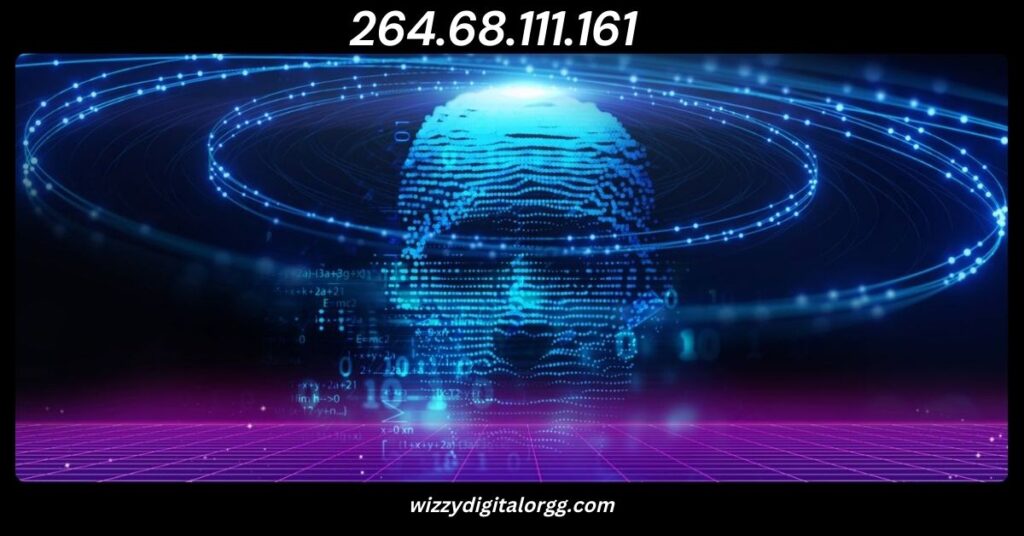
The internet runs on numbers, and one such number that may have caught your attention is 264.68.111.161. But what is it, and why is it important? In this article, we will explore everything you need to know about 264.68.111.161. We will break it down in simple terms so anyone around the world can understand it. Whether you’re a business owner, a curious internet user, or someone learning about networking, this guide is designed for you.
What is 264.68.111.161?
264.68.111.161 looks like an IP address, but it is not valid under current Internet Protocol (IP) standards. The reason is simple: in IPv4, each part of the address (called an “octet”) must be a number between 0 and 255. The first part of 264.68.111.161 is “264,” which is higher than 255. Therefore, this address cannot exist in the IPv4 space.
Still, 264.68.111.161 appears in search queries and online databases. Some users may enter it accidentally. Others might use it for documentation, testing, or internal tools. Let’s look deeper into these scenarios.

The Role of IP Addresses in the Internet
IP addresses are like home addresses for your device on the internet. Every device connected to the internet gets a unique IP address. This helps the internet find where to send emails, websites, and other digital content.
There are two main types of IP addresses:
- IPv4 (e.g., 192.168.1.1)
- IPv6 (e.g., 2001:0db8:85a3:0000:0000:8a2e:0370:7334)
IPv4 addresses, like the format of 264.68.111.161, use four sets of numbers separated by periods.
Why Would 264.68.111.161 Be Used?
Although 264.68.111.161 is not a valid public IPv4 address, there are several reasons why people or businesses might mention it:
Also Read nhentai.nef: A Comprehensive Guide
1. Educational or Training Purposes
Some schools or companies use invalid IPs like 264.68.111.161 for classroom examples or test data. This helps prevent accidental communication with real IP addresses on the internet.
2. Internal Business Systems
Certain businesses use invalid IP addresses internally in private systems. These are not connected to the public internet and are used only within a company’s intranet.
3. Typographical Error
In some cases, 264.68.111.161 may be a mistake. Someone might mean to type 194.68.111.161 or 164.68.111.161 but type it incorrectly.
4. Blocked or Obfuscated Addresses
Sometimes, developers or security professionals replace real IPs with fake ones like 264.68.111.161 when writing documentation to protect privacy.
How to Identify a Valid IP Address
A valid IPv4 address follows this format: xxx.xxx.xxx.xxx where each “xxx” is a number between 0 and 255.
So while 264.68.111.161 looks like an IP address, it breaks the rule because 264 is outside the allowed range.
Here’s an example of a valid IP: 192.168.0.1
And here’s a breakdown:
- 192 is within 0-255
- 168 is within 0-255
- 0 is within 0-255
- 1 is within 0-255
What Happens if You Try to Visit 264.68.111.161?
If you try to visit 264.68.111.161 in a browser, you will likely see an error. That’s because your computer knows this is not a real IP address and cannot connect to it.
IP Addresses and Online Business
Businesses depend heavily on IP addresses to manage their online presence. IP addresses help:
- Show content to the right users
- Monitor traffic sources
- Protect websites with IP filtering and firewalls
Using a valid and dedicated IP address ensures customers get quick access to services and information. Invalid IPs like 264.68.111.161 are not used in live environments.
Related IP Address Topics
To better understand 264.68.111.161, it’s helpful to look at related terms and concepts:
IP Range
An IP range is a group of IP addresses. Businesses might reserve a range for security and operational reasons.
Subnetting
Subnetting is dividing a network into smaller parts. It makes data transfer faster and more secure.
DNS (Domain Name System)
DNS translates domain names (like google.com) into IP addresses. It’s how browsers find websites.
Static vs Dynamic IP
- Static IP: Doesn’t change. Often used by businesses.
- Dynamic IP: Changes regularly. Often used at home.
264.68.111.161 is neither static nor dynamic because it is not usable.
Also Read:Mifroom: Exploring the Future of Personalized Virtual Spaces
Why Search Engines Pick Up Invalid IPs
Search engines often list invalid IPs because:
- They appear in forum discussions
- They are found in logs or documentation
- People search for them out of curiosity
That’s why an article like this helps clarify what it means and how it fits into the larger internet picture.
Business Use of IP Addresses Like 264.68.111.161
While 264.68.111.161 is not valid for internet communication, businesses often rely on IP management. They:
- Allocate ranges for different departments
- Use private or fake IPs for testing
- Keep logs that sometimes include fake or sample IPs
Understanding IP address formatting helps prevent errors, especially when setting up firewalls, servers, or load balancers.
How to Check If an IP Address is Valid
To see if an IP like 264.68.111.161 is valid, use these methods:
- Online IP Check Tools
- Ping or Traceroute Commands
- Subnet Calculators
- Validation through coding tools
Most will instantly report that 264.68.111.161 is invalid.
Cybersecurity and Fake IP Addresses
In cybersecurity, fake IPs are often used to:
- Protect sensitive information
- Avoid showing real server addresses
- Simulate traffic in tests
So, while 264.68.111.161 might not be real, it can still have useful roles in safe environments.
The Future of IP Addressing
As IPv4 space runs out, the world is moving toward IPv6. These longer addresses provide more combinations and better efficiency.
However, IPv4 addresses like 264.68.111.161 will remain part of digital conversations — especially as examples or for internal systems.
Also Read: digitalconnectmag.com: Your Go-To Source for Tech Tips, SEO Tools, and Digital Trends
Common Misunderstandings About 264.68.111.161
- “It must be a virus.” No, it’s just an invalid address.
- “It’s tracking me.” It can’t. Invalid IPs can’t track anything.
- “It belongs to a hacker.” No. Since it’s not valid, it’s not usable for hacking.
Final Thoughts
264.68.111.161 may not exist in the real world of IP networks, but it teaches us a lot. It shows the need for correct formatting, IP knowledge, and internet security. If you saw this IP in a log or a browser, now you know it’s not dangerous — just invalid.
Knowing how IPs work helps individuals and businesses keep their digital presence strong, secure, and efficient.
Frequently Asked Questions (FAQs)
What is 264.68.111.161?
It looks like an IP address but is not valid because the first number (264) is too high for the IPv4 range.
Can 264.68.111.161 be used by my network?
No, it cannot be used in real-world internet settings. It may be used for internal testing or documentation.
Why do people search for 264.68.111.161?
Some people find it in logs, documentation, or use it for training examples. Others might search due to typos.
Is 264.68.111.161 dangerous?
No. It’s an invalid address and can’t connect to anything.
How can I check if an IP address is real?
Use tools like online IP checkers or networking commands like ping and traceroute.
Why does this address show up in online tools?
It may be part of sample data, tests, or fake entries to avoid using real IPs.
Should I block 264.68.111.161 on my firewall?
No need. It’s not a real IP address and can’t send or receive data.
What is the valid range for IPv4 addresses?
Each section should be between 0 and 255.
What’s the difference between 264.68.111.161 and a valid IP?
264.68.111.161 has an invalid first octet (264), while valid IPs stay between 0–255 in every part.



